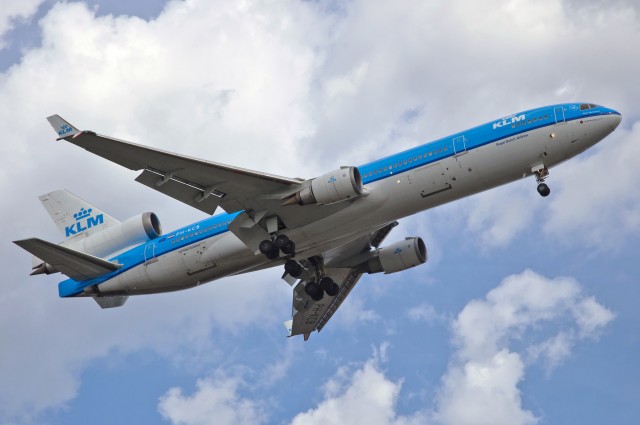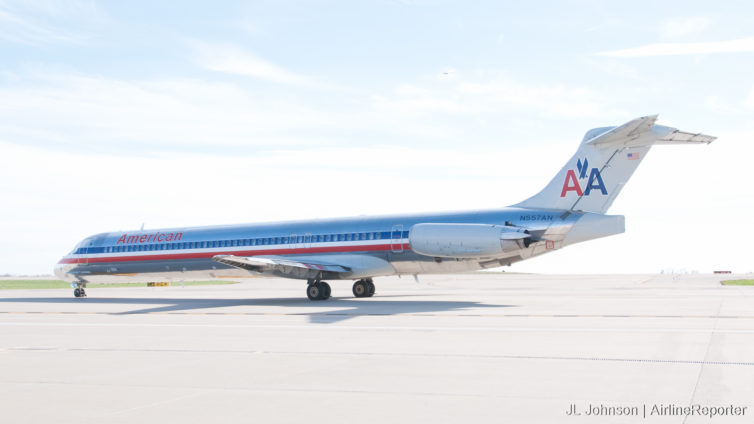
N557AN, an MD-82 spotted on the ramp at MCI in 2013.
Love them or hate them, American’s MD-80s are on the way out. This should not come as a shock as we’ve known for years the day was eventually coming. But late last month American Airlines announced details for the MadDog’s final day of operations. Mark your calendars, folks. September 4 is the day the “Super 80s” carry passengers off into the sunset one last time.
When I mention the upcoming retirement to friends, the majority of responses are positive. It seems the general consensus is that these DC-9 descendants have overstayed their welcome in the AvGeek and frequent flyer worlds. While few folks seem willing to admit they will miss the MD-80s, I fully expect it will only be a matter of time. For decades the MadDogs were ubiquitous. Airports just won’t be the same without them.
No matter how we feel, these retirement dates tend to sneak up on us. The official final flight on September 4 is sold out, but there remain many options to get out for a goodbye flight, including many options on the final day of operation…
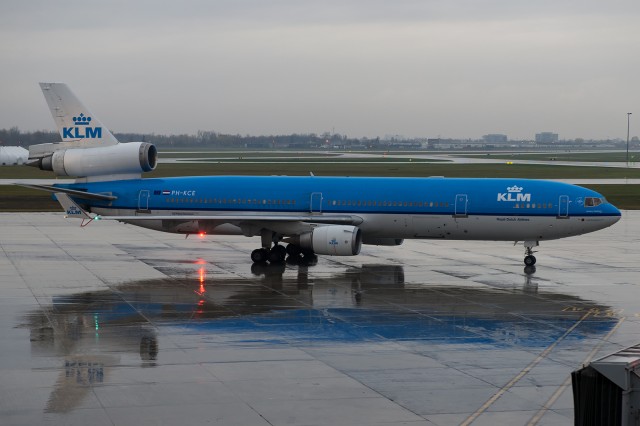
PH-KCE (Audrey Hepburn) arriving at gate A55 after a water cannon salute – Photo: Bernie Leighton | AirlineReporter
In October of 1934, KLM (Royal Dutch Airlines) took delivery of their first Douglas aircraft: a DC-2. This DC-2 was entered into an air race from London to Melbourne. It placed second. Not only did it place second, but it did so carrying a full passenger load. Fast forward to 1993. KLM took delivery of their last, now, McDonnell Douglas aircraft type – the MD-11. Unfortunately for us enthusiasts, October 25th (when KLM’s summer timetable ended) would not only mark the end of the MD-11, but the end of KLM’s eighty-year history of commercially operating McDonnell Douglas aircraft.
All of KLM’s MD-11s were named after women renown for their charitable or humanitarian efforts. The aircraft I was to fly on, PH-KCE, is named after Audrey Hepburn.
Naturally, I had to be a part of the final flight.
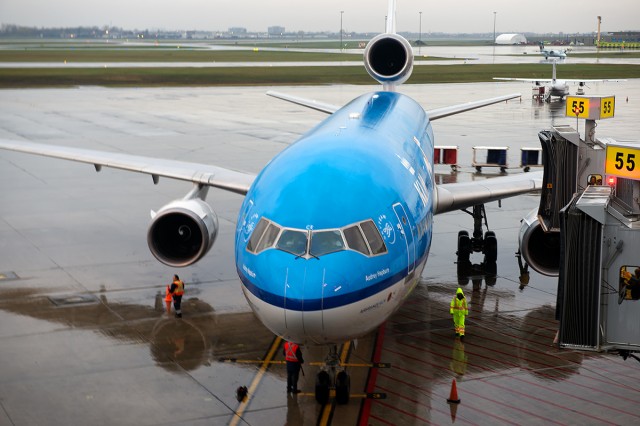
KLM’s last MD-11 to Montreal at the gate – Photo: Bernie Leighton | AirlineReporter
KLM and Aeroports Du Montreal were also very aware that this was the last MD-11 commercial passenger service, ever. They had prepared quite a party at the gate. There was an impressive stack of cupcakes; some bearing a chocolate saying “KLM 95” – along with a soft drinks bar and a photo booth to get your photo taken with an MD-11.
The MD-11 was probably a bad idea. McAir came up with the aircraft because it was a bigger, meaner, DC-10. So much DC-10 that there originally was not going to be an MD-11, but a DC-10 stretch. There were two attempts at this aircraft: a DC-10-10 stretched by 40 feet, and a DC-10-30 stretched by 30 feet. Concurrently, McDonnell Douglas (McAir) was concerned about the range of the 747-SP and began work on an ultra-long-range DC-10 Global.
This research lead to an aircraft series called the DC-10 Super 60. The DC-10 Super 60 was going to be a series. A simple stretch, an ultra-long-range variant, and an aircraft optimized for both range and capacity. Unfortunately for McDonnell Douglas, the American Airlines 191 crash happened – summarily executing the DC-10 program. It did not help that there was economic malaise going on at the time, either.
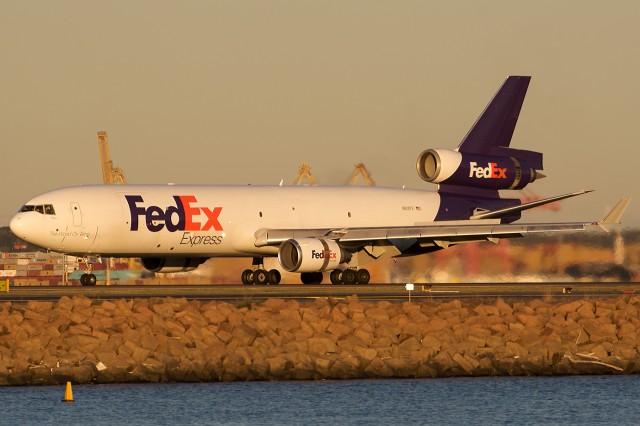
Many MD-11s have been converted to cargo duty. An example arriving at Kingsford-Smith Airport, Sydney. Photo – Bernie Leighton | AirlineReporter
Being the kings of iteration that they were, in 1981 they decided to revive the large trijet research. Leasing a DC-10-10 from Continental, they studied various winglet configurations in conjunction with NASA. For reasons of marketing, this project would be designated the MD-100. This was an interesting project as it actually offered more engine options than the final MD-11, in the form of the Rolls Royce RB.211. By November 1983, it was clear there was no interest in the MD-100. The board shuttered it.
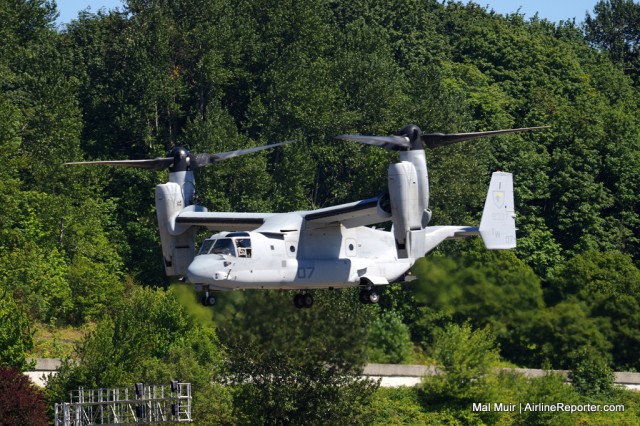
A MV-22B Osprey on approach to Boeing Field
Summer in Seattle means lots of things to locals in the Pacific Northwest. Long days with the sun setting at 10pm, with Mt. Rainier standing out tall and proud in the skyline. Blue skies, sun, and outdoor fun, but most of all it means one thing for AvGeeks: Jet noise!
During the first weekend of August in Seattle is Seafair, and the main attraction has always been the Blue Angels (it also coincides with Fleet Week). However, this year, things were a little bit different over the skies and on the ground in Seattle. The United States Marine Corps (USMC) came to town. They were not going to let the US Navy have all the fun, and this year, it was time to bring Marine Week to Seattle.

The United States Marine Corps takes over the Museum of Flight for Marine Week – Photo: Jennifer Nagle
This year the USMC decided to bring Marine Week to Seattle to showcase and honor not only the Marine Corps as a whole, but also how much of a role the Corps has to the local area. People in Seattle could meet the Marines themselves, learn about what they do, why they do it, and then get to see how they do it. The biggest part of the weekend would be the Marine Air Ground Task Force (MAGTF) demonstration over the skies of Lake Washington.
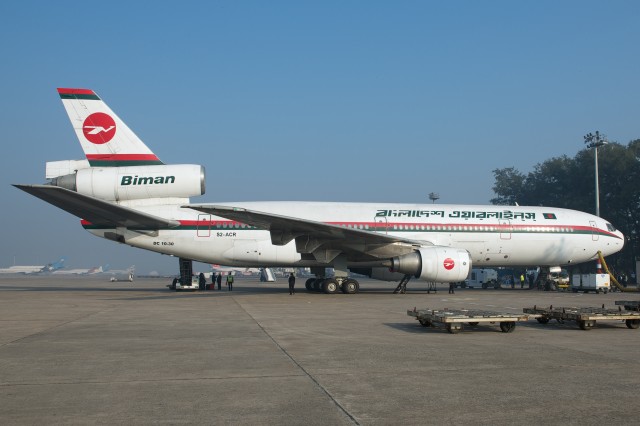
S2-ACR on the ramp at Hazrat Shahjalal International Airport – Photo: Bernie Leighton | AirlineReporter
So, you want to fly on a DC-10 in 2014? Bad news. Very bad news. I hate to tell you, but that ship has sailed. Until a few days ago, that was not the case.
Arriving into Dhaka at 4:51 am, the first thing I noticed was the haze. I really have no idea where it comes from – it seems to burn off by the afternoon. The next thing I noticed about Bangladesh was how easy it was to get a visa on arrival. If you were wondering, Dhaka is only certified for CAT-1 ILS approaches. This has been known to wreck timetables and force diversions to far off points.
The first thing I noticed was that the airport has a great degree of 1970’s Marxist-chic to it. I admit, the airport actually opened for passenger use in the 1980’s- but there were many stop-and-start construction efforts that make it, in some ways, the most amazing the airport was ever (semi) completed.
I had exactly twenty four hours in Dhaka and almost no idea what to expect. Dhaka’s a very fluid city; the buildings may look the same, but the traffic is a variable no one should mess with! Thankfully, the hotel shuttle never seemed to have much of a problem finding either a semi-paved or unpaved road to beat the chaos. The other thing not included in travel brochures about Dhaka is that no matter what hour of the day, someone is riding their car horn.
But I wasn’t in Dhaka for the traffic or interesting architecture. I was there to take the last passenger DC-10 flight ever.



